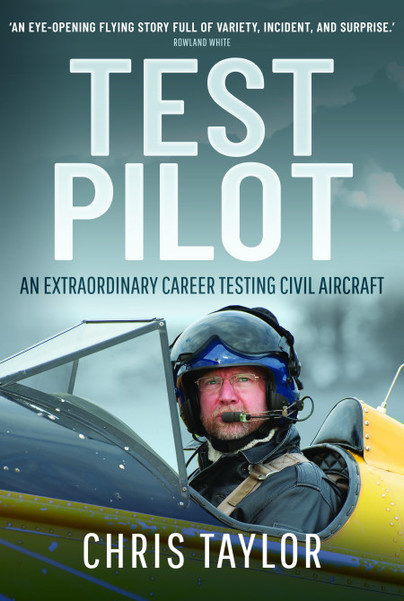Author guest post: Chris Taylor
Since writing my book ‘Test Pilot’ and its publication in March 2022 I have been asked numerous questions about my test flying – particularly the aircraft I have been fortunate enough to fly. I have listed just some of the questions I’ve been asked in recent days and the answers I’ve provided.
Given the incredibly warm weather we are enjoying as I write I thought I would mention some of the open cockpit aircraft I have flight tested.
As I comment within my book – most maintenance and therefore flight testing of such aircraft tends to take place in the winter. I tell one story about flying a Tiger Moth with its elderly owner insisting on flying with me in the front seat. After climbing to altitude to conduct some spinning the guy suddenly stopped speaking – given the hideously cold temperature added to the wind chill I was scared he might have died on me.

I tested the Ryan ST-3 at Breighton on order to clear it for deliberate spinning. It was generally a nice aircraft to fly and was easy to land. The windscreen gave reasonably good protection.

I test flew this lovely Steigmaster at Old Warden. A delight to fly with a comfortable cockpit.

Over the last twenty years I have flown scores of Tiger Moths for one reason or another. They are the definitive British trainer from the 1930s and apart from the weak directional stability typical of their generation they are a very pleasant aeroplane to fly in warm weather. Unfortunately I have usually flown them in the winter and their miniscule windscreen has left my head and face buffeted.

The Boeing Stearman is the American equivalent of the Tiger Moth, being used to train thousands of wartime pilots. The airflow around the cockpit and windscreen is much more pleasant than the Tiger Moth. I tested many example of the type – a poor performer but solidly built and reasonably easy to fly.

The Belgian equivalent of the Tiger Moth is the Stampe and again has a much better windscreen than its British sibling. And it has a tail wheel and wheel brakes – What’s not to like? Although the brakes on this particular example didn’t work and the handling pilot nearly crashed us into some innocent bystanders on landing.

I flew the DH60 in Norfolk in the winter and had to spend half a day sorting out insurance beforehand. Like its successor the Tiger Moth the windscreen was small and lots of cold air surrounded me in the cabin – I was glad of a warm coffee on completion.

The Waco I flew was a modern recreation of a much older design and as a result had a better cockpit and large windscreen which made it quite enjoyable to fly apart from the fact that this example suffered from massive airspeed indication errors which needed fixing.

I learnt how to fly autogyros in Yorkshire in the winter. The weather was so cold that we could not drink coffee as the water taps were frozen up each morning. The Magni M16 has a good efficient windscreen and offers an incredible field of view. Leaning over the side it is possible to see directly beneath the aircraft with no wing getting in the way.

I learnt how to fly single seat gyros at Henstridge. With no windscreen or cockpit this was arguably the best open cockpit experiences – but a warm Ozee suit with good gloves and a helmet was essential.

My most miserable open cockpit experience to date has to be testing this Aerochute at Newtownards in Northern Ireland in February. It was sub-zero at the surface and thirty minutes or so of flying around at 2000 feet left me resembling an ice block – despite gloves and helmet etc.
……………………………………………………………………………………..

Test Pilot is available order here.

